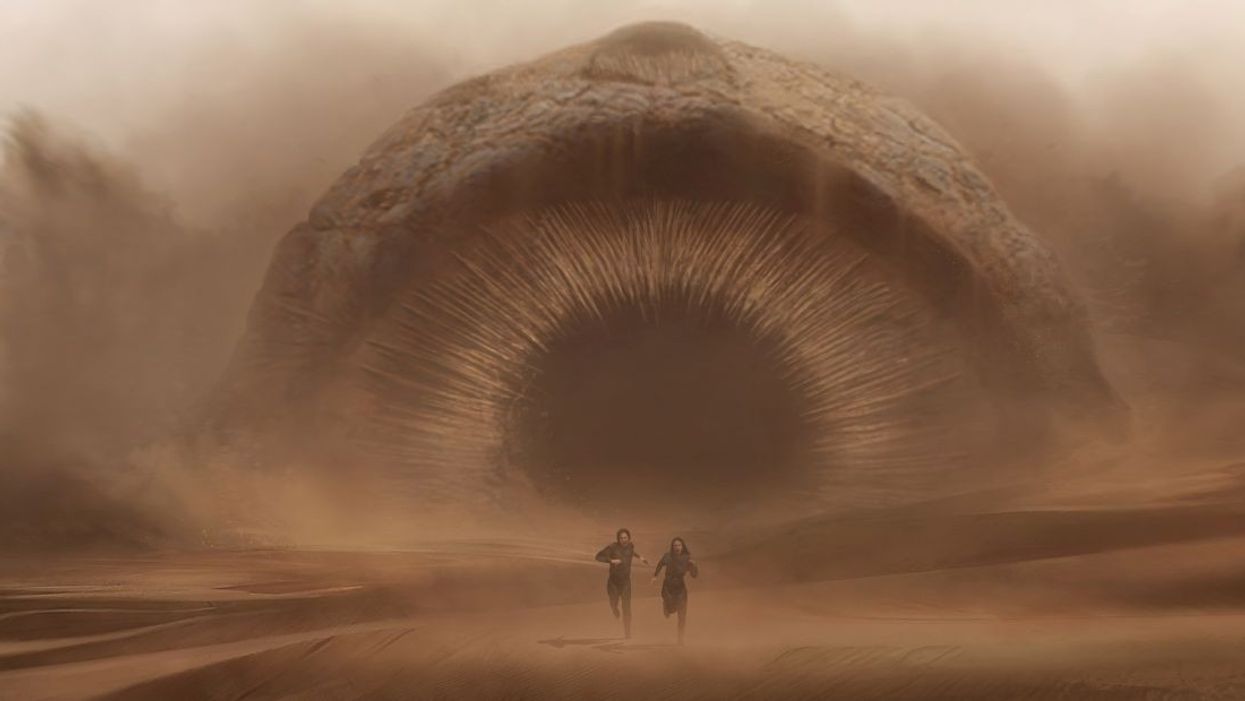Green Screens Aren’t Green Anymore (And That's Why the 'Dune' VFX Look So Good)
Take an in-depth look into why Dune succeeds where so many other big-budget blockbusters seem to fail with realistic VFX.

Dune: Part One is going to be a movie remembered for many, many different reasons. For some, it’s simply a budding love story for two up-and-coming Hollywood starlets, for others it could be considered the grand culmination of Denis Villeneuve's cinematic destiny (or more so with the upcoming Part Two, perhaps), yet for many others it might be remembered as the film that finally kills the green screen.
And while that might not be the biggest or most obvious legacy for such a divisive, yet clearly great, film, when you look behind the scenes of Dune: Part One it clearly appears to set the standard for how CGI and VFX should be used in big budget cinema—at least for those filmmakers trying to keep a certain style of realism.
Let’s explore this phenomenon with a great video essay (once again brought to us by Thomas Flight) which explores how Dune creates its VFX not with green or blue screens, but with beige sand color backdrops. As we discuss what that means for the future of CGI.
The History of Blue and Green Screens
As we’ve discussed at great lengths here on No Film School, the green screen (and the blue screen) has been an integral and synonymous part of the VFX filmmaking tradition. From the earliest iterations dating back to some of the first days of cinema, green screens, rear projections, and other basic CGI elements are just a fact of modern filmmaking life.
And, truth be told, the green screen technique isn’t that hard to pull off even for those just starting off in their video careers. In fact, here are some great articles that cover this topic:
- Essential Techniques for Green Screening like a Champ
- The Best Tips For Keying Hair on a Green Screen
- 10 Tips That Will Help You Green Screen like a Champion
- Six Tips for Shooting with a Portable Greenscreen
- 101 Ways You Can Up Your Green Screen Game
Sand Colored Screens for Dune
But that’s not what Villeneuve did for his films. And I like how Thomas talks about this decision in his video breakdown as the onus for much of Villeneuve’s creative decisions came down to replicating real life and real world lighting as much as possible.
He used sand-colored screens instead. This is a decision that I personally feel Dune: Part One greatly benefits from. From the big action sequences to the small moments shared between a grieving mother and son, these scenes very much feel like they’re shot almost documentary-style in the desert sands.

Which is the crux of the debate at the heart of this video essay, because clearly there are some filmmakers and franchises that still make heavy (read: heavy, heavy) use of green screens and blue screens as a way to put their characters in a nearly completely computer generated world.
And, again, no knock on those filmmakers who choose to work in this vein. Sometimes, yes, these might be decisions made out of necessity to keep production costs down in favor of VFX costs. However, in many instances, the VFX is just really so good that it becomes an art form and style all of its own.
However, Thomas’ video does a great job of showing just how and why these film approaches look different. And, if you’re a fan of Villeneuve’s aesthetic choices, you can appreciate why he chose to forgo the traditional green or blue screens for this project and instead went with his naturalistic options.
So, Why Do Dune’s VFX Look So Good?
Simply put, the best answer to this question might be just because they care enough to make it look this way. Not saying that other big-budget blockbuster movies don’t care about their VFX looking good, but rather they don’t always focus on making them look realistic. Which, to many filmmakers and cinefiles, this might be synonymous with "good"—but that’s a subjective way of thinking.
The cinematography of Dune is just a great example of intentionality at every level, as the entire crew and team, from Villeneuve to Greig Fraser to editor Joe Walker and everyone in between, is working to create a world that feels real, lived in, and absolutely believable in every aspect portrayed on the big (or small) screen.
But how do you feel about Dune and its VFX compared to other modern blockbuster movies? Are you still interested in refining your current green screen techniques, or do you too want to look for more naturalistic options? Let us know your thoughts in the comments.
Source: Thomas Flight











